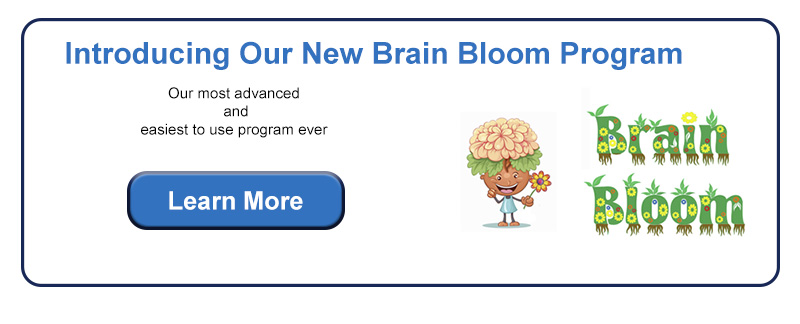Does your child frequently mishear instructions, struggle to grasp lessons amidst classroom chatter, or ask teachers and peers to repeat themselves?
These aren't just casual oversights. They could be indicators of a deeper challenge that hinders their academic growth. It's not merely about them not paying attention. This could be a sign of a problem with auditory closure.
Now that you're aware there might be an issue, it's crucial to understand it in depth. So, what exactly is auditory closure?
Auditory closure refers to the brain's ability to fill in missing parts of an auditory message, enabling one to comprehend an entire sentence or statement even if all the words aren’t heard clearly. It's much like when you listen to a song on a crackling radio and can still understand the lyrics, even if some parts are missing or unclear.
For most of us, this process happens seamlessly. Our brain naturally fills in gaps using context and prior knowledge. However, for children with auditory closure difficulties, this 'gap-filling' doesn't occur as effectively. They may hear partial words or phrases and find it challenging to make sense of the complete message. This isn’t about the clarity of hearing – a child might have perfect hearing and yet struggle with auditory closure.
In a classroom setting, think of it as trying to understand a teacher's instructions with intermittent static interruptions. While many students can bridge the gaps and infer the full instructions, children facing this difficulty might only catch bits and pieces, leading to confusion and misinterpretation.
And the truth is auditory closure can manifest in various ways and degrees across different individuals, so understanding its root causes is fundamental to devising effective interventions.
- Neurological Factors:
The human brain, especially in its developmental stages, is a complex web of connections. Sometimes, due to genetic factors or early developmental hiccups, the neural pathways related to auditory processing might not form optimally. This can lead to challenges in deciphering sounds, especially in environments with competing noises.
- Past Traumas or Ear Infections:
Chronic ear infections during childhood or certain traumatic events affecting the ear can hinder the ear's proper functioning. This can sometimes lead to persistent difficulties in processing auditory stimuli.
- Genetics:
Like many other traits, auditory processing skills can be inherited. If there's a family history of auditory closure or related issues, there's an increased likelihood of a child exhibiting similar challenges.
- Environmental Factors:
Exposure to consistently loud environments, especially during formative years, can desensitize the ears, leading to challenges in distinguishing specific sounds from background noise.
- Delayed Speech or Language Development:
Sometimes, children who show signs of delayed speech or language milestones might also exhibit signs of auditory closure. The two can be interlinked, where one exacerbates the challenges of the other.
Having gained a clearer understanding of what auditory closure is and causes, you might be wondering, "How does this manifest in my child? What should I be on the lookout for?" Let's dive into the common signs and symptoms that may indicate a child struggles with auditory closure.
- Frequent Requests for Repetition:
One of the most telltale signs of auditory closure difficulties is the constant need for repetition. If you observe that your child often asks "What?" or requests, "Can you say that again?", even in environments with minimal background noise, it’s a cause for concern. This isn’t simply about not paying attention. When background noise is minimal, and the message is clear, yet a child frequently asks for repetition, it can indicate a challenge in processing the auditory information they receive. It's like listening to a clear radio station but missing out on parts of a song every now and then.
- Difficulty Following Multi-Step Instructions:
A classroom is a hub of constant instructions. Imagine a scenario where a teacher, amidst a lesson, says, "Pick up your history books, turn to page 55, and note down the key points from the first three paragraphs." For most children, this would be a straightforward sequence of tasks. However, a child with auditory closure might find it a maze of confusion. They might turn to the right page but then wonder what they were supposed to do next. Or they may pick up the wrong book altogether, as they missed or misinterpreted the first part of the instruction. It's akin to trying to follow a recipe while only catching every third step – the end result can be quite unpredictable.
- Misunderstandings in Conversations:
Picture a simple chat between friends discussing their weekend plans. One suggests visiting the local "beach," but your child excitedly prepares for a trip to buy a "peach." Such frequent, seemingly minor misunderstandings can become sources of frustration or even embarrassment. This isn't about mishearing a word here and there. It's about the brain's struggle to fill in the gaps when parts of words or sentences are unclear, leading to out-of-context responses that can bewilder both the child and those around them.
- Overwhelm in Noisy Environments:
Imagine the cacophony of a school cafeteria at lunchtime — the chatter of students, the clatter of trays, announcements over the PA system. For most kids, this is just background noise, easily filtered out. But for a child with auditory closure issues, it's akin to being in the middle of a bustling market with everyone vying for their attention at once. They may find it incredibly challenging to focus on their friend's story about a weekend adventure or the teacher's instructions for the next class. It's not just about the volume but the ability to discern meaningful messages amidst the noise.
- Difficulty with Phonics and Spelling:
Learning to read and spell involves a crucial auditory component — the ability to break down and understand individual sounds in words. Consider a reading lesson where students sound out the word "sh-i-p." While many children can smoothly assemble these phonetic bits into the word "ship," a child with auditory closure might struggle, hearing "s-i-p" instead. Such discrepancies can create significant hurdles in subjects like English, where phonetic understanding is foundational. It's similar to trying to assemble a jigsaw puzzle when some of the pieces don't quite match the picture on the box.
These challenging experiences stemming from auditory closure can have profound effects on a child's life. They might leave your child feeling isolated, lower their self-confidence, and even cause them to withdraw from social situations and miss out on essential learning moments.
In the context of the classroom, the ability to accurately receive and process auditory information stands paramount. Such struggles might manifest as missed assignments, confusion during practical experiments, or safety concerns during activities like science labs or physical education. When faced with group tasks, the demands intensify. Listening to multiple voices, often overlapping, becomes a herculean challenge. It's akin to a child trying to tune into several radio stations at once, the result being missed insights and diminished contributions.
But the classroom is not the sole arena of challenges. The early years of schooling serve a dual purpose – fostering academic prowess and nurturing social connections. A simple misinterpretation or the inability to track group conversations can sow seeds of exclusion. Over time, this might breed hesitancy in forging new friendships or participating in group endeavors.
Communication, after all, is more than just words. It's the subtleties – the tone, the pitch, the context. The nuances of sarcasm, humor, or emotion that enrich our conversations might elude children with auditory closure, making even casual chats feel like navigating through a maze.
This continuous battle to stay in sync with their environment can erode a child's self-esteem. They may start to view themselves through a lens of deficiency, hesitating to share their thoughts or partake in activities. Such an impact on their self-worth and identity underscores the critical need for understanding and intervention.
After recognizing the profound impact these challenges can have on a child's self-esteem and identity, it naturally leads us to the question: What solutions are out there, and how effective are they truly in addressing auditory closure?
The world of child health and development has not remained oblivious to the challenges of auditory closure. Several solutions and therapies have been proposed and practiced over the years, aiming to ease the symptoms and enhance auditory processing. However, while some have shown promise, others come with their own sets of limitations.
- Auditory Training Programs:
These are software-based interventions designed to improve auditory processing through repetitive exercises. While they can be effective, their success often depends on consistent practice and engagement. Moreover, some children might find them tedious, leading to reduced commitment and effectiveness over time.
- Environmental Modifications:
Simple changes, like seating a child closer to a teacher or reducing background noise, can help. However, these modifications only provide temporary relief and don't address the root cause of the problem.
- Hearing Aids and FM Systems:
For some children, amplification devices can assist in making sounds clearer. But they don’t necessarily improve the brain's ability to process the sounds, which is the crux of auditory closure.
- Speech and Language Therapy:
Working with a therapist can enhance listening skills and provide strategies for better communication. Yet, the availability of trained specialists can be limited, and regular sessions might be costly for many families.
- Educational Accommodations:
Providing notes, offering more time for tasks, and using visual aids can help children in the classroom. Still, these measures are reactive rather than proactive, often placing the onus on educators to continually adapt.
In essence, while there are remedies in place, many offer symptomatic relief rather than a holistic solution. The varied effectiveness of these strategies emphasizes the need for a more tailored approach, considering the unique needs and experiences of each child with auditory closure issues. It's this gap that has driven us to develop our specialized program, which we believe addresses the root of the problem more comprehensively.






